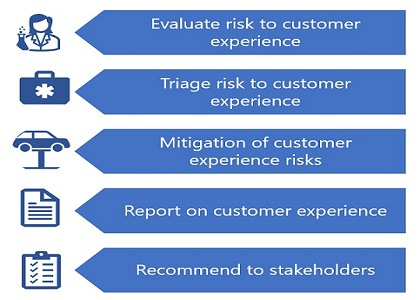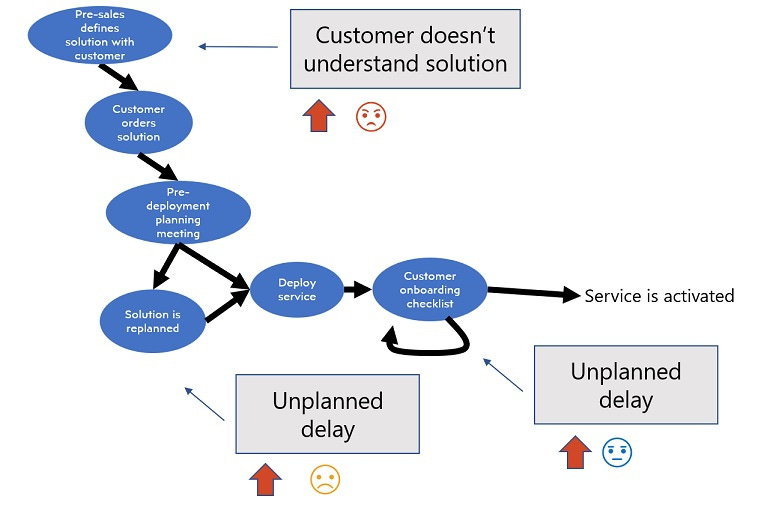Why Service Validation Matters
Ensuring high-quality services in fast-paced environments
Your product team stepped up to handle new service requirements in a quick wins release. This service update reduces time and expenses from pre-sales to service activation. Your stakeholders are delighted about the margin improvement. In the rush to update the service, minimal effort was devoted to validating the service changes. Should you delay the quick wins to fully validate the service?
These service improvements are needed before further scaling your service because your margins are low. You conclude further delay is going to lead to customer satisfaction issues because it takes too long to activate service. However, you can't relax your quality standards.
The steps to take in this difficult situation are:
Evaluate the risk to the customer experience with the service updates
Triage the risks into a high-medium-low probability of occurrence
Define how to mitigate the risks
Report on the customer experience and risks
Collaborate on a balanced recommendation to stakeholders
Let's break these steps down and find a way to overcome this challenge!
Evaluate the Risk to the Customer Experience
Looking at the service from the customer's perspective is a good way to spot the risks of a poor customer experience. Suppose your team has updated your Software-as-a-Service (SaaS) offer with a pre-sales checklist that accelerates service activation. If the checklist is complete then the service is activated quickly. Unfortunately, the pre-sales team was tied up and couldn't validate the service changes.
You review the service activation steps for risks to a poor customer experience. Here are the steps and the risks:
From the customer's perspective, you find a risk of the customer having an incomplete solution and 2 risks of a delay in service activation.
Triage the Risks to the Customer Experience
You still have a little time to recover from the lack of service verification. What can you do about these risks to the customer experience? The probability of all risks happening is high since the pre-sales team is unaware of the pre-sales checklist. The impact of the risks varies based on the timing of hitting the risk. Next, you rate the probability and impact of each risk using the below scale:
Next update the service activation flow with these ratings:
With this, you prioritize the risks in the order of impact. The first risk is the most important risk to attack - The customer doesn't understand the solution. Next, you consider how to mitigate this risk.
Mitigate the Risks
Risk mitigation is where the power of the product team comes to life. Raising the risk of a key first step in pre-sales being missed brings out creative solutions from the product team. In this case, the product team agrees the pre-sales checklist can't be skipped. The product team settles on a tiger team of sales and product managers to fill out the pre-sales checklist for every opportunity at launch. This allows time to train the sales team on the checklist.
With agreement on the risk mitigation, the next step is reporting on the service validation gap and the risk management plan.
Reporting on Service Validation Status
A balanced view of the service readiness helps stakeholders understand the likely customer experience at launch. Tying the service validation status back to the requirements is a good way to show the facts of the service validation status. Using the above example here is a way to prepare a summary report:
The final step is to provide a recommendation to your stakeholders on launching the service.
Stakeholder Recommendation
Next is reading out to your stakeholders on the status of the service and recommending the next steps. You have a summary of the customer experience and a characterization of the risks. By going through the above steps the product team agrees that the service is ready to launch and resources are allocated to finish service validation.
Conclusion
The end of a new service introduction needs as much focus as the beginning. By characterizing the service readiness from the customer's perspective, you can define and mitigate risks before customers are impacted. Even a small iteration for a quick win deserves a quick review of service readiness. The steps to take are:
Assess the impact on the customer experience from the service update
Categorize the risks based on the likelihood of occurrence
Develop a plan to minimize the risks
Provide a report on the customer experience and risks
Work together to create a recommendation for your stakeholders
By following these steps, you can provide the best customer experience while minimizing risks.
Interesting Links
Onboarding Executives Onboarding a peer executive is very similar to working with peer product managers. Thanks to Rian van der Merwe for finding this article on partnering with your peers.
Do you have specific examples? Handling feedback by balancing specifics and the big picture. Some good thoughts from John Cutler on strategies to grow after feedback.







Building a good foundation and establishing consistent reporting like you have laid out for the summary report is a huge win for teams. Definitely helps with story telling!